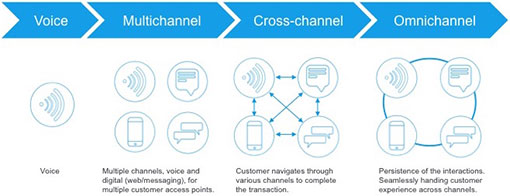Priyanka Tiwari of Interactions argues that the term omnichannel has been overused.
Over the last few years, the word ‘omnichannel’ has been used (and overused) to describe a utopia of marketing and customer care.
We have all heard and read about how an omnichannel approach solves all customer care issues and allows brands to prove their customer obsession. So, why do brands still pursue a better approach?
The answer is simple: because every brand has defined ‘omnichannel’ using the best of their abilities and technologies at hand.
Many multichannel or cross-channel solutions are being called omnichannel only to be found incapable of delivering what they promised.
What technology vendors like Interactions needed was a solution capable of delivering a true omnichannel experience. And what differentiates a true omnichannel solution from its counterparts is the technology that empowers it.
Let’s start with the definition. A true omnichannel solution does not make the customer bend their ways to engage with the brand, it allows customers to switch through various channels of their choice to complete a transaction without being limited by rules and predefined menus.
It offers a personalised experience for the customer using the data and customers’ past behaviour. And it maintains context and persistence throughout the customer journey so they don’t have to repeat themselves as they change channels.

Here’s a quick checklist of items you should be looking for while selecting an omnichannel solution:
Channel Choice
A true omnichannel IVA solution spans all channels of customer communication and maintains conversations and brand persona across those channels. This is from traditional telephony to digital channels like text, webchat, mobile apps, and from new messaging platforms such as Facebook Messenger and Apple Business Chat to smart speakers like Google Home and Amazon Echo.
Personalisation
Customers like it when brands show that they care by offering personal and relevant service. A true omnichannel solution recognises a customer when they start the engagement, greets them with their name and carries out a conversation using what they know about the customer – past behaviour, purchases and preferences.
A true omnichannel IVA achieves this by tightly integrating with a brand’s CRM or data stores and retrieving customer profiles and relevant information in real time to offer a personalised experience.
Ex. Good morning, Tim. How may I help you?
Context and Persistence
When it comes to customer service interactions, context is everything. Repeating themselves again and again when switching channels or personnel is one of the biggest cause of frustration among consumers.
A true omnichannel IVA avoids all of this by maintaining a context either by transferring session IDs or the history of the transaction across channels.
Ex. Good morning, Tim. Are you calling about your recent purchase of a vacuum cleaner or how may I help you?
Integrations
Modern customer experience expectations have taken customer service beyond the contact centres.
Now, it is widely distributed among various departments — for example, the social channels are managed by a marketing team and web or mobile chat channels are managed by digital teams.
These teams need to access central CRM systems, knowledge management systems, agent desktop software and other repositories to deliver a coherent experience.
A true omnichannel IVA integrates with all the pieces of the customer service jigsaw puzzle in real time.
The Best of AI and Human Intelligence
A true omnichannel solution uses the best of AI technologies to understand and predict customer behaviour.
Technologies such as automated speech recognition and natural language processing help the IVA understand the customer in spite of complicated prompts, stacked intents or background noises.
Dialog management technologies ensure a conversational interaction over voice and digital channels. A true omnichannel IVA also offers a second source of recognition — human intelligence — when the AI produces lower confidence score in what the customer is asking.
The machine learning algorithms complete the feedback loop so the system learns from its experiences and gets smarter with each interaction.
With the current misuse of terms describing a variety of automated customer care solutions, it’s important to understand what technologies are required to empower a truly omnichannel solution — so you can be sure you’re selecting the right technology for your organisation.
Author: Guest Author
Published On: 16th Aug 2018 - Last modified: 21st Aug 2018
Read more about - Guest Blogs, Interactions





































